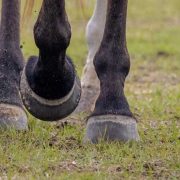How To Keep Your Horse In Top Shape With Kelato Swelldown
Annabel Cargill is a professional eventing rider from the Southern Highlands in NSW. In this video, she talks about her philosophy on…
Free Delivery when you spend $49 or more. (Weight Limits Apply – view more)
 Dog
Dog

Shop Tuckers great range of dog food, health care & wellness products today. Delivered or Click & Collect.
 Cat
Cat

Tuckers has a great range of cat food, health care & litter products for your beloved cat. Shop now.
 Horse
Horse

Tuckers carry a huge range of food, supplements, health care, hoof care and grooming accessories. Shop now.
 How To Keep Your Horse In Top Shape With Kelato Swelldown
How To Keep Your Horse In Top Shape With Kelato Swelldown Get your Free Balanced TruGuide Diet
Get your Free Balanced TruGuide Diet WET FEET: NUTRITIONAL MANAGEMENT OF HORSES IN WATER-LOGGED AREAS
WET FEET: NUTRITIONAL MANAGEMENT OF HORSES IN WATER-LOGGED AREAS GastroAID Everyday: The unique gut health supplement with science-backed ingredients
GastroAID Everyday: The unique gut health supplement with science-backed ingredients EQUINE HEALTH: SPECIAL OFFERS FROM THE WINTER CATALOGUE
EQUINE HEALTH: SPECIAL OFFERS FROM THE WINTER CATALOGUE Chook/Bird
Chook/Bird

Tuckers range of food, accessories & health care products will keep your chooks & birds happy and healthy.
 Small Animal
Small Animal

Shop food and health care products for your little mates @ Tuckers. Delivered or Click & Collect.
 Farm/Garden
Farm/Garden

Tuckers carry a wide range of sheep & cattle products, plus everything you’ll need around the farm or garden.
 Dog
Dog

Shop Tuckers great range of dog food, health care & wellness products today. Delivered or Click & Collect.
 Cat
Cat

Tuckers has a great range of cat food, health care & litter products for your beloved cat. Shop now.
 Horse
Horse

Tuckers carry a huge range of food, supplements, health care, hoof care and grooming accessories. Shop now.
 How To Keep Your Horse In Top Shape With Kelato Swelldown
How To Keep Your Horse In Top Shape With Kelato Swelldown Get your Free Balanced TruGuide Diet
Get your Free Balanced TruGuide Diet WET FEET: NUTRITIONAL MANAGEMENT OF HORSES IN WATER-LOGGED AREAS
WET FEET: NUTRITIONAL MANAGEMENT OF HORSES IN WATER-LOGGED AREAS GastroAID Everyday: The unique gut health supplement with science-backed ingredients
GastroAID Everyday: The unique gut health supplement with science-backed ingredients EQUINE HEALTH: SPECIAL OFFERS FROM THE WINTER CATALOGUE
EQUINE HEALTH: SPECIAL OFFERS FROM THE WINTER CATALOGUE Chook/Bird
Chook/Bird

Tuckers range of food, accessories & health care products will keep your chooks & birds happy and healthy.
 Small Animal
Small Animal

Shop food and health care products for your little mates @ Tuckers. Delivered or Click & Collect.
 Farm/Garden
Farm/Garden

Tuckers carry a wide range of sheep & cattle products, plus everything you’ll need around the farm or garden.
Courtesy Kentucky Equine Research Staff

Nearly a year ago, world-renowned singer Celine Dion revealed she had been diagnosed with stiff-person syndrome, a progressive neurological and autoimmune disease. At the time, most had not heard of this extremely rare disease, as only two or three people in a million are diagnosed yearly.
First described in 1956, stiff-person syndrome causes excruciating and debilitating muscle spasms, heightened sensitivity of certain senses, and an upswing in emotional distress. Muscle spasms can be so severe that muscles become rigid, as if frozen in contracture. Stiff-person syndrome often progresses to the point of significant disability, even when treatment is received.
Researchers do not understand why the disease develops. One theory suggests symptoms may be triggered by a reduction in a specific neurotransmitter called gamma amino butyric acid (GABA) that helps control muscle movement. A glitch in the immune system produces antibodies against a specific enzyme that assists in the production of GABA. These antibodies then block pathways that prevent inhibition of muscle contraction, leading to excessive muscle contraction.
While researchers and physicians continue to learn about stiff-person syndrome, veterinarians occasionally diagnose the same set of clinical signs in horses. Cases have been reported in a few countries, and veterinarians recently identified the first case of “stiff-horse syndrome” in the United Kingdom.,*
In this instance, a young Irish Sport Horse gelding presented to a veterinary clinic with a rigid, spraddle-legged hindlimb stance coupled with an extreme swayback posture. The stiffness and unusual posture typically occurred when the gelding was subjected to stressful stimuli, such as a change of environment or transport. Certain auditory and tactile stimuli also resulted in stiffness. Episodes usually lasted a few seconds, though occasionally persisted for a few minutes.
When not stressed, clinical examination of this horse revealed no lameness on a straight line, on the longe, or when ridden. While there was no evidence of muscle atrophy or hypertrophy, topline and hindquarter muscles were tense on palpation, and veterinarians observed intermittent muscular contractions in these areas. Multiple differential diagnoses, including myopathy, equine motor neuron disease, and lumbosacral anomalies, were all ruled out. Bloodwork revealed elevated antibody titers, supporting a diagnosis of stiff-horse syndrome.
Veterinarians prescribed daily oral prednisolone, a corticosteroid, for two weeks and the owner moved him to a boarding establishment that provided more turnout and a quieter environment. After two weeks of prednisolone, all clinical signs had disappeared and the gelding returned to work. He stayed in remission for two months until clinical signs began again. The owner then restarted prednisolone. The horse stayed on prednisolone for three months followed by two months of rest and resumed work as a low-level eventer. Veterinarians evaluated antibodies after five months of treatment, and the value registered as normal.
A sound diet that delivers all essential nutrients in optimal quantities serves as the cornerstone of well-being in horses. Because stiff-horse syndrome affects neuromuscular health, even if only through occasional spasms and strain, horse owners should supplement with natural-source vitamin E to support the nervous and muscular systems. Choose Nano-E for its second-to-none bioavailability and protection.
*Cantatore, F., M. Marcatili, and J. Withers. 2022. First case of stiff-horse syndrome in United Kingdom. Journal of Equine Veterinary Science:104022.
**Purcell, T.B., A.D. Sellers, and L.S. Goehring. 2012. Presumed case of “stiff-horse syndrome” caused by decreased gamma-aminobutyric acid (GABA) production in an American Paint mare. Canadian Veterinary Journal 53:75-78.
Entire range - quick and secure delivery
Buy securely online and pickup at your local store
Call your local store and come on down to pickup
© 2024 Tuckers Pet & Produce.
